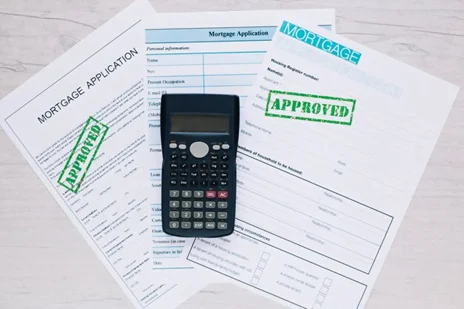
Tax season can be a daunting time for many individuals and families, but understanding the intricacies of IRS forms can help make the process smoother and potentially save you money. One such form that can unlock significant tax benefits is IRS Form 5695. In this comprehensive guide, we will demystify Form 5695 and shed light on the energy efficiency tax credits it offers. By the end, you’ll have a clear understanding of how to take advantage of these credits to lower your tax burden and promote a greener lifestyle.
What is IRS Form 5695?
IRS Form 5695, officially known as the “Residential Energy Credits” form, is used to claim tax credits for qualified residential energy-efficient improvements and equipment installed in your home. These credits were created to encourage individuals to invest in energy-saving technologies, reduce their carbon footprint, and promote a more sustainable future.
Form 5695 covers a wide range of eligible expenses, including:
- Solar electric systems
- Solar water heaters
- Small wind energy systems
- Geothermal heat pumps
- Residential fuel cell and microturbine systems
- Energy-efficient windows, doors, and skylights
- Insulation materials
- High-efficiency heating and cooling systems
- Energy-efficient roofing
It’s important to note that not all energy-related expenses qualify for tax credits. Some expenses that do not qualify include:
- Energy-efficient appliances
- Energy-efficient vehicles
- Energy-efficient building materials not directly related to heating, cooling, or generating energy for your home
Understanding the Tax Credits
Residential Energy Efficient Property Credit:
The Residential Energy Efficient Property Credit, also known as the solar investment tax credit (ITC), is the primary credit claimed on Form 5695. This credit allows homeowners to claim up to 26% of the qualified expenses for installing solar electric systems, solar water heaters, small wind energy systems, and geothermal heat pumps. The credit applies to both new construction and existing homes.
Non-Business Energy Property Credit:
The Non-Business Energy Property Credit covers a variety of home improvements aimed at increasing energy efficiency. This credit allows homeowners to claim up to 10% of the cost of qualified energy-efficient improvements, such as energy-efficient windows, doors, insulation, and high-efficiency heating and cooling systems. However, there are limits and restrictions on the maximum credit amount for each type of improvement.
Filling Out IRS Form 5695
Personal Information:
Provide your name, Social Security number, and address in the personal information section of Form 5695.
Part I: Residential Energy Efficient Property Credit:
In this section, you’ll calculate the tax credit for qualified residential energy-efficient properties, such as solar panels or geothermal heat pumps. You’ll need to gather the necessary information, including the cost of the property, installation expenses, and any other relevant documentation.

Part II: Non-Business Energy Property Credit:
This section focuses on energy-efficient home improvements, such as energy-efficient windows or high-efficiency heating and cooling systems. You’ll need to list the specific improvements made, along with their costs. Keep in mind that there are individual limits for each type of improvement, so consult the IRS guidelines or a tax professional for accurate information.
Part III: Qualified Residential Energy Property Costs:
If you claimed a credit for a residential energy-efficient property on a previous tax return and are still eligible for a carryforward credit, you’ll need to complete Part III. This section allows you to calculate any remaining credit that you can carry forward to future tax years.
Part IV: Other Credits:
In Part IV, you can claim any other energy-related credits not covered in the previous sections. These may include credits for residential fuel cell and microturbine systems. Consult the instructions provided with Form 5695 or seek professional guidance to accurately complete this section.
Part V: Credits:
Part V is where you add up the credits you calculated in Parts I, II, III, and IV. Enter the total credit amount on the designated line.
Part VI: General Information:
Lastly, provide any additional required information and sign and date the form to certify its accuracy.
Additional Tips and Considerations
Documentation:
When claiming energy efficiency tax credits, it’s crucial to keep detailed records and retain all relevant documentation. This includes invoices, receipts, manufacturer certifications, and any other supporting evidence that substantiates your claim. Proper documentation will help you avoid any issues during an IRS audit and ensure that you receive the credits you’re entitled to.
Qualified vs. Non-Qualified Expenses:
Differentiating between qualified and non-qualified expenses is vital to accurately completing Form 5695. Consult IRS guidelines, specific tax provisions, and instructions for the form to determine which expenses are eligible for credits and which are not.
Professional Assistance:
If you find the tax filing process overwhelming or have questions regarding eligibility, it’s advisable to seek professional assistance from a qualified tax advisor or accountant. They can provide expert guidance, help you maximize your tax credits, and ensure compliance with all IRS regulations.
Final Words
IRS Form 5695 provides a valuable opportunity to offset your tax liability while promoting energy efficiency in your home. By taking advantage of the available tax credits, you can lower your carbon footprint, save money on energy bills, and contribute to a greener future. Remember to consult the instructions provided with Form 5695 and seek professional advice if needed. With careful planning, documentation, and a thorough understanding of the form, you can navigate the complexities of energy efficiency tax credits and unlock the financial benefits they offer.
Read more about Residential Renewable Energy Tax Credits
FAQ
Form 5695 primarily covers two types of energy-related tax credits: the Residential Energy Efficient Property Credit and the Nonbusiness Energy Property Credit. The credits are designed to incentivize the use of renewable energy sources and energy-efficient improvements in residential properties.
The Residential Energy Efficient Property Credit allows taxpayers to claim a credit for the installation of qualified residential renewable energy equipment. This includes solar panels, solar water heaters, wind turbines, geothermal heat pumps, and fuel cell systems. The credit is based on a percentage of the costs incurred for the equipment and its installation.
To claim tax credits using Form 5695, you need to complete the form accurately and attach it to your annual income tax return (such as Form 1040). You must provide all the required information and documentation, including the details of the energy-efficient improvements or renewable energy equipment installed and their associated costs.


